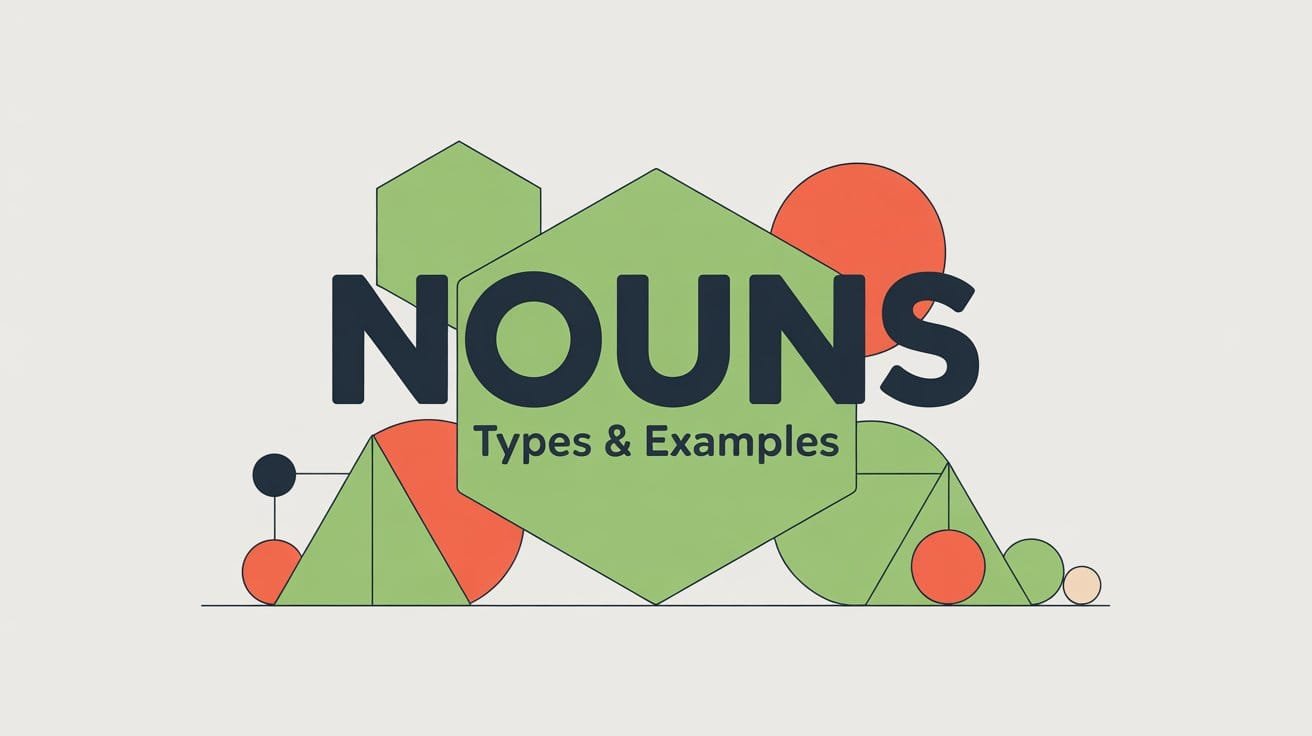In communication, we often need to show that something belongs to someone or something. That’s where possessive nouns come in.
It’s a noun that shows ownership or a relationship between one noun and another. For example, in Lisa’s book, the noun Lisa’s tells us who owns the book. The apostrophe plays an important role in showing this connection.
What Is a Possessive Noun?
A possessive noun is a noun that shows ownership or a relationship to something else. It tells us that something belongs to someone or is connected to something.
You form a possessive noun by adding an apostrophe, sometimes followed by an s, to the noun.
Possessive Noun Examples:
- Mona’s backpack → the backpack belongs to Lisa
- The dog’s bone → the bone belongs to the dog
- The children’s toys → the toys belong to the children
In each case, the possessive noun tells us who or what owns something.
Possessive nouns can refer to both people and things, and they are used regularly in both spoken and written English.
How to Form Possessive Nouns
Possessive nouns are formed by adding an apostrophe, sometimes followed by s, depending on the structure of the noun. The rules differ slightly for singular and plural nouns.
Singular Nouns
For most singular nouns, add ’s to the end.
Examples:
- a girl’s notebook
- the teacher’s pen
- my brother’s car
Plural Nouns That End in “s”
For regular plural nouns (those ending in s), add only an apostrophe after the final s.
Examples:
- the students’ projects
- the dogs’ bowls
- the houses’ roofs
Plural Nouns That Do Not End in “s”
For irregular plural nouns, add ’s just like a singular noun.
Examples:
- the children’s toys
- the men’s jackets
- the women’s restroom
Compound Nouns
Add the apostrophe + s at the end of the entire compound noun.
Examples:
- my father-in-law’s opinion
- the editor-in-chief’s article
Joint Possession
If two people own the same item, add ’s to the second noun only.
Example: Jack and Emma’s apartment (They share one apartment)
Separate Possession
If each person owns something individually, add ’s to both nouns.
Example: Jack’s and Emma’s phones (Each has their own phone)
Irregular Possessive Nouns
Some nouns form irregular plurals, and their possessive forms don’t follow the usual “add only an apostrophe” rule. Instead, you add ’s—just like you would with a singular noun.
Examples:
- children → children’s
The children’s shoes are muddy. - men → men’s
The men’s jackets were hanging by the door. - women → women’s
She runs a women’s health clinic.
These are exceptions because they do not end in “s” in their plural form. Always treat them like singular nouns when adding possession.
Possessive Nouns vs. Possessive Pronouns
Both possessive nouns and possessive pronouns show ownership, but they do it in different ways and follow different grammar rules.
A possessive noun uses an apostrophe, sometimes with an added s, to indicate that something belongs to someone or something. For example, in the sentence “Emma’s dress is new,” the possessive noun Emma’s shows that the dress belongs to Emma.
On the other hand, possessive pronouns replace nouns entirely and never use apostrophes. Words like mine, yours, hers, his, ours, and theirs are all possessive pronouns. You might say, “That seat is hers,” where hers stands in for a noun phrase like Sarah’s seat.
It’s important not to confuse the two. For instance, “her’s” and “their’s” are always incorrect because possessive pronouns don’t take apostrophes. Apostrophes are only used with possessive nouns, not pronouns.
A good rule of thumb: if the word replaces a noun entirely, it likely doesn’t need an apostrophe.
| Possessive Noun | Possessive Pronoun |
|---|---|
| Maria’s phone | hers |
| the boy’s shoes | his |
| the team’s banner | theirs |
Common Mistakes with Possessive Nouns
Even native speakers sometimes make mistakes when using possessive nouns. Here are some of the most frequent errors, and how to avoid them:
Confusing “its” and “it’s”
This is one of the most common mix-ups.
- “its” (no apostrophe) is a possessive pronoun.
Example: The cat licked its paw. - “it’s” (with apostrophe) is a contraction of “it is” or “it has.”
Example: It’s raining today.
(= It is raining today)
Tip: If you can replace it with “it is,” use it’s. If you’re showing possession, use its.
Misplacing Apostrophes in Plural Possessives
Don’t add apostrophe + s to regular plural nouns.
- Incorrect: The teachers’s lounge
- Correct: The teachers’ lounge (many teachers)
Tip: For plural nouns that end in s, just add an apostrophe at the end.
Overusing Apostrophes with Possessive Pronouns
Possessive pronouns never take an apostrophe.
- Incorrect: That’s her’s.
- Correct: That’s hers.
Forgetting to Add Apostrophes in Possessive Forms
Leaving out the apostrophe can confuse the reader.
- Incorrect: The dogs collar was red.
- Correct: The dog’s collar was red.
Examples of Possessive Nouns in Sentences
Here are some sentence examples showing different types of possessive nouns in action:
Singular Possessive Nouns
- The girl’s bicycle was parked outside.
- I borrowed Mark’s pen for the exam.
Plural Possessive Nouns (ending in “s”)
- The students’ projects were displayed in the hallway.
- All of the dogs’ bowls were empty.
Plural Possessive Nouns (irregular plurals)
- The children’s toys were scattered everywhere.
- We visited the men’s locker room.
Compound Possessive Nouns
- My sister-in-law’s opinion was helpful.
- The editor-in-chief’s decision was final.
Joint and Separate Possession
- Liam and Zoe’s apartment is downtown. (joint)
- Liam’s and Zoe’s keys were lost. (separate)
Possession vs. Contraction
Apostrophes can show possession or contraction, but not both at the same time. Knowing the difference helps you avoid confusing mistakes.
- Possession means something belongs to someone or something.
Example: The dog’s leash is on the table. (The leash belongs to the dog.) - Contraction means shortening two words into one.
Example: It’s raining today. (It’s = It is)
Common confusing pairs include:
- its (possessive) vs. it’s (contraction of it is)
- your (possessive) vs. you’re (contraction of you are)
- their (possessive) vs. they’re (contraction of they are)
Tip: If you can expand it into two words, it’s a contraction. If it shows ownership, it’s possessive.
FAQs About Possessive Nouns
Can a noun be both plural and possessive?
Yes. When a plural noun ends in s, you simply add an apostrophe after the final s. Example:
The teachers’ lounge refers to a lounge used by multiple teachers. For irregular plurals (like children or men), add ’s as you would with a singular noun: children’s books, men’s shoes
How do you form the possessive of a name ending in “s”?
Both of the following are generally accepted:
Charles’s book
Charles’ book
Style guides vary. If you’re following modern American usage, Charles’s is preferred. If you’re using a more traditional or journalistic style, Charles’ may be used.
What is the difference between possessive nouns and possessive adjectives?
Possessive nouns show ownership and typically come before another noun. Example: Lisa’s car
Possessive adjectives are pronouns that describe possession. Example: her car, my book, their house. They serve similar functions but are formed and used differently.



